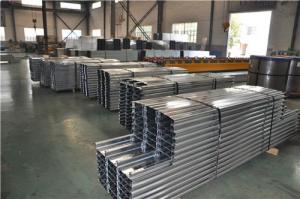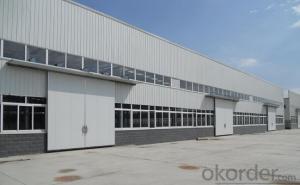Light Steel Structure Workshop
- Loading Port:
- China Main Port
- Payment Terms:
- TT or LC
- Min Order Qty:
- 10000 Square meters m.t.
- Supply Capability:
- 50000 SQUARE METERS/MONTH m.t./month
OKorder Service Pledge
OKorder Financial Service
You Might Also Like
Specifications of light steel structure workshop
Project type: UHV alternating-current transformer and electric reactor workshop and equipment steel structure
The steel dosage: 1275MTs
Building area: 12500M2
The unit component weight: 11.4MTs
The span: 24m
1. GB standard material
2. High Structural safety and reliability
3. The production can reach GB/JIS/ISO/ASME standard
Packaging & Delivery of light steel structure workshop
1. According to the project design and the component size, usually the main component parts are nude packing and shipped by bulk vessel. And the small parts are packed in box or suitable packages and shipped by containers.
2. This will be communicated and negotiated with buyer according to the design.
Engineering Design Software of light steel structure workshop
Tekla Structure \ AUTO CAD \ PKPM software etc
⊙Complex spatial structure project detailed design
⊙Construct 3D-model and structure analysis. ensure the accuracy of the workshop drawings
⊙Steel structure detail ,project management, automatic Shop Drawing, BOM table automatic generation system.
⊙Control the whole structure design process, we can obtain higher efficiency and better results

Technical support of light steel structure workshop
|
Worker |
Rate of frontline workers with certificate on duty reaches 100% |
|
Welder |
186 welders got AWS & ASME qualification 124 welders got JIS qualification 56 welders got DNV &BV qualification |
|
Technical inspector |
40 inspectors with UT 2 certificate 10 inspectors with RT 2 certificate 12 inspectors with MT 2 certificate 3 inspectors with UT3 certificate |
|
Engineer |
21 engineers with senior title 49 engineers with medium title 70 engineers with primary title. 61 First-Class Construction Engineers 182 Second-Class Construction Engineers |
|
International certification |
10 engineers with International Welding engineer, 8 engineers with CWI. |
Production Flow of steel structure
Material preparation—cutting—fitting up—welding—component correction—rust removal—paint coating—packing—to storage and transportation (each process has the relevant inspection)
Usage/Applications of steel structure
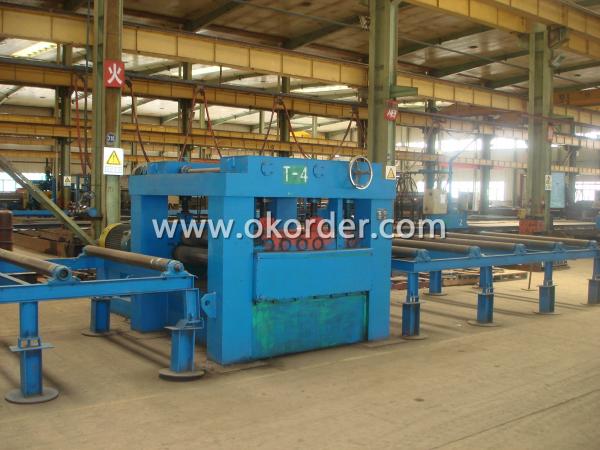

*Characters of Structure Steel
1. Steel is characterized by high strength, light weight, good rigidity, strong deformation capacity, so it is suitable for construction of large-span, super high and super-heavy buildings particularly;
2. It with good homogeneous and isotropic, is an ideal elastomer which perfectly fits the application of general engineering;
3. The material has good ductility and toughness, so it can have large deformation and it can well withstand dynamic loads;
4. Steel structure’s construction period is short;
5. Steel structure has high degree of industrialization and can realize-specialized production with high level of mechanization.
*Steel structure application
1. Heavy industrial plants: relatively large span and column spacing; with a heavy duty crane or large-tonnage cranes; or plants with 2 to 3 layers cranes; as well as some high-temperature workshop should adopt steel crane beams, steel components, steel roof, steel columns, etc. up to the whole structure.
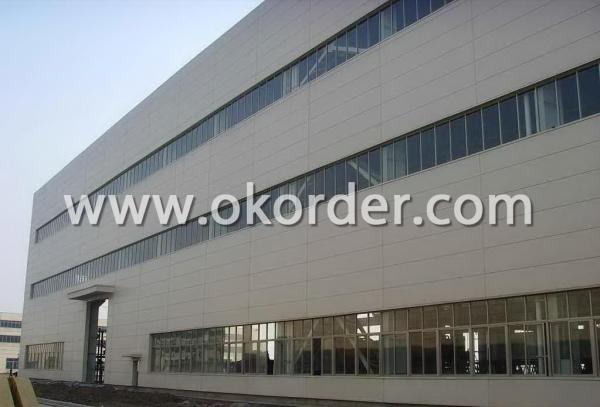
2. Large span structure: the greater the span of the structure, the more significant economic benefits will have by reducing the weight of the structure
3. Towering structures and high-rise buildings: the towering structure, including high-voltage transmission line towers, substation structure, radio and television emission towers and masts, etc. These structures are mainly exposed to the wind load. Besides of its light weight and easy installation, structure steel can bring upon with more economic returns by reducing the wind load through its high-strength and smaller member section.
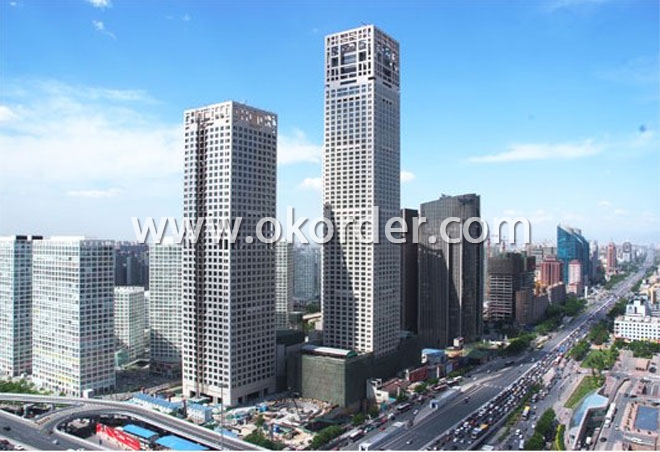
4. Structure under dynamic loads: As steel with good dynamic performance and toughness, so it can be used directly to crane beam bearing a greater or larger span bridge crane
5. Removable and mobile structures: Structure Steel can also apply to movable Exhibition hall and prefabricated house etc by virtue of its light weight, bolt connection, easy installation and uninstallation. In case of construction machinery, it is a must to use structure steel so as to reduce the structural weight.
6. Containers and pipes: the high-pressure pipe and pipeline, gas tank and boiler are all made of steel for the sake of its high strength and leakproofness
7. Light steel structure: light steel structures and portal frame structure combined with single angle or thin-walled structural steel with the advantages of light weight, build fast and steel saving etc., in recent years has been widely used.
8. Other buildings: Transport Corridor, trestle and various pipeline support frame, as well as blast furnaces and boilers frameworks are usually made of steel structure.
All in all, according to the reality, structure steel is widely used for high, large, heavy and light construction.
- Q:What are the considerations for designing steel structures for industrial applications?
- When designing steel structures for industrial applications, several considerations need to be taken into account. Firstly, it is crucial to understand the specific requirements and function of the industrial facility, such as its intended use, load capacity, and potential environmental factors like corrosion or seismic activity. Additionally, the design should adhere to applicable building codes and regulations to ensure safety and compliance. Structural stability, durability, and resilience against potential hazards like fire or extreme weather conditions are also vital considerations. Finally, cost-effectiveness and efficiency in construction and maintenance should be weighed to optimize the overall design.
- Q:Is the floor of the steel structure slab cast-in-place or steel?
- Steel structure is mainly made of steel material, and it is one of the main types of building structure.
- Q:What are the considerations for designing steel structures in cold climates?
- When designing steel structures in cold climates, several considerations need to be taken into account to ensure the safety, durability, and efficiency of the structure. Some key considerations include: 1. Material Selection: The choice of steel grade is crucial in cold climates. High-strength steel with good toughness properties is preferred to withstand low temperatures and potential impact loads. Additionally, the steel should have good resistance to corrosion, as cold climates often involve exposure to moisture, snow, and deicing chemicals. 2. Thermal Bridging: Cold climates require proper insulation to prevent thermal bridging. Thermal bridging occurs when heat is transferred through the steel structure at a faster rate than through the insulation, leading to energy loss and potential condensation issues. The design should incorporate insulation materials with low thermal conductivity and ensure continuity of insulation layers to minimize heat transfer. 3. Structural Design: Cold climates impose additional loads on the structure due to snow accumulation, ice formation, and wind forces. Structural members should be designed to account for these increased loads, considering factors such as snow load, ice buildup, and wind speed specific to the region. Special attention should be given to the design of connections, as they can become more brittle in cold temperatures. 4. Foundation Design: Foundations in cold climates need to be designed to withstand freezing and thawing cycles. Proper insulation and frost protection measures, such as incorporating insulation boards or heating elements, can prevent frost heave and maintain the structural integrity of the foundation. 5. Ventilation and Moisture Control: Cold climates often lead to high humidity levels inside buildings due to heating systems and temperature differentials. Proper ventilation and moisture control measures, such as vapor barriers and adequate air exchange, should be implemented to prevent condensation, mold growth, and corrosion of steel components. 6. Maintenance: Regular maintenance is crucial for steel structures in cold climates to ensure their longevity. This includes regular inspections for signs of corrosion, ice damming, and damage caused by freeze-thaw cycles. Prompt repairs, such as coating damaged areas and removing ice buildup, should be undertaken to prevent further deterioration. By considering these factors, engineers can design steel structures that are resilient, energy-efficient, and capable of withstanding the unique challenges posed by cold climates.
- Q:How are steel structures used in the construction of exhibition halls and convention centers?
- Steel structures are commonly used in the construction of exhibition halls and convention centers due to their strength, durability, and flexibility. Steel beams and columns provide the structural framework, allowing for large open spaces and high ceilings without the need for excessive support columns. The use of steel also enables the construction of large-span roofs, which can accommodate exhibition booths, stages, and seating arrangements. Additionally, steel structures can be easily modified or expanded to accommodate changing exhibition layouts or future expansion needs.
- Q:What are the considerations for designing steel structures for adaptive reuse projects?
- When designing steel structures for adaptive reuse projects, there are several key considerations to keep in mind. Firstly, it is important to assess the structural integrity and load-bearing capacity of the existing steel framework. This includes evaluating the condition of the steel members, connections, and overall stability. Additionally, the design should account for any modifications or additions needed to meet the new functional requirements of the adaptive reuse project. This may involve reconfiguring the layout, adding new floors or openings, or reinforcing the existing structure to support added loads. Another consideration is the compatibility of the steel structure with the desired aesthetic and design goals of the adaptive reuse project. This may involve preserving and showcasing the existing steel elements as architectural features or integrating new steel components harmoniously. Furthermore, sustainable design principles should be considered, such as incorporating energy-efficient systems, utilizing recycled steel, and optimizing the use of natural light and ventilation. Lastly, compliance with local building codes and regulations is crucial to ensure the safety and legality of the adaptive reuse project. This includes ensuring fire safety, accessibility, and meeting seismic requirements. Overall, designing steel structures for adaptive reuse projects requires a comprehensive understanding of the existing structure, functional requirements, design goals, sustainability considerations, and compliance with building codes.
- Q:How do steel structures handle dynamic effects of moving loads?
- Steel structures handle dynamic effects of moving loads by employing various design strategies. Firstly, they are designed to have sufficient strength and stiffness to safely support the loads. This involves calculating the appropriate sizes and shapes of the structural members, as well as selecting suitable materials. To address dynamic effects, steel structures often incorporate measures such as damping systems, which absorb and dissipate energy generated by the moving loads. These systems can include dampers or tuned mass dampers that reduce vibrations and minimize the potential for resonance. Additionally, steel structures can be designed with flexible connections or joints that allow for movement and deformation under dynamic loads. This helps distribute the forces and stresses more evenly throughout the structure, reducing the risk of failure. Furthermore, computer simulations and analysis techniques are employed to assess the dynamic response of steel structures to moving loads. These tools enable engineers to optimize the design and predict potential issues, ensuring the structure can withstand the dynamic effects and maintain its integrity and stability. Overall, steel structures handle dynamic effects of moving loads through careful design, incorporating damping systems, flexible connections, and utilizing advanced analysis techniques to ensure their safety and performance.
- Q:How do steel structures perform in terms of flexibility for future modifications?
- Steel structures are highly flexible for future modifications due to their inherent strength and versatility. The use of steel allows for easy alterations, additions, and extensions to the structure without compromising its integrity. Steel components can be easily modified or replaced, making it convenient and cost-effective to adapt the structure to changing needs or requirements. Additionally, steel structures offer the possibility of incorporating new technologies or features, enabling the flexibility to meet evolving demands.
- Q:How are steel structures recycled and reused?
- Steel structures can be effectively recycled and reused in a variety of ways. The process typically begins with the deconstruction and dismantling of the structure, which involves carefully removing components such as beams, columns, and trusses. These components are then separated and sorted, with any non-steel materials like concrete or wood being removed. Once the steel components are separated, they are transported to a recycling facility where they undergo further processing. The first step is usually to shred the steel into small pieces or strips to increase its surface area. This shredded steel is then subjected to a process called magnetic separation, where powerful magnets are used to attract and extract any remaining non-ferrous materials. After the magnetic separation, the steel is further refined by removing any impurities or contaminants through techniques such as chemical treatments or electrolysis. This helps improve the quality of the recycled steel, ensuring it meets the required specifications for reuse. The recycled steel can then be used in a variety of applications. One common use is in the manufacturing of new steel products or structures. The recycled steel can be melted down and combined with other steel alloys to create new steel products, such as beams, pipes, or sheets. This process significantly reduces the energy and raw material requirements compared to producing steel from scratch, making it an environmentally friendly option. Another way steel structures can be reused is through their relocation and repurposing. If the structure is still in good condition, it can be disassembled and transported to a new location for reuse. This is particularly common for large steel buildings, where the structure can be dismantled and reassembled elsewhere, serving a new purpose such as a warehouse, office space, or even a residential building. Additionally, steel structures can also be repurposed within their original location. For example, an old steel bridge can be transformed into a pedestrian walkway or a cycling path. This adaptive reuse not only preserves the structural integrity of the steel but also extends its lifespan, reducing the need for new steel production. Overall, the recycling and reuse of steel structures offer numerous environmental and economic benefits. It conserves valuable resources, reduces energy consumption, and minimizes waste generation. By incorporating the principles of a circular economy, steel structures can be transformed from temporary constructions into sustainable, long-lasting assets.
- Q:What are the advantages of using steel in the construction of religious buildings?
- There are several advantages of using steel in the construction of religious buildings. Firstly, steel offers excellent strength and durability, ensuring the longevity of the structure. This is especially important for religious buildings that often have a significant historical and cultural value. Secondly, steel allows for greater flexibility in design, enabling architects to create unique and intricate structures that can inspire awe and spirituality. Additionally, steel is a sustainable and eco-friendly material, as it can be recycled and reused, reducing the carbon footprint of the construction process. Lastly, steel offers a high level of fire resistance, providing enhanced safety for those using the religious building. Overall, the use of steel in religious buildings combines strength, design flexibility, sustainability, and safety, making it a favorable choice for construction.
- Q:What are the design considerations for steel silos and tanks?
- Some key design considerations for steel silos and tanks include structural stability, material durability, corrosion resistance, capacity requirements, and access for maintenance and inspection. Additionally, factors such as seismic design, wind loads, and thermal expansion need to be taken into account. Proper ventilation, insulation, and fire safety measures are also important considerations.
1. Manufacturer Overview |
|
|---|---|
| Location | SHANDONG,China |
| Year Established | 2008 |
| Annual Output Value | Above US$20 Billion |
| Main Markets | WEST AFRICA,INDIA,JAPAN,AMERICA |
| Company Certifications | ISO9001:2008;ISO14001:2004 |
2. Manufacturer Certificates |
|
|---|---|
| a) Certification Name | |
| Range | |
| Reference | |
| Validity Period | |
3. Manufacturer Capability |
|
|---|---|
| a)Trade Capacity | |
| Nearest Port | TIANJIN PORT/ QINGDAO PORT |
| Export Percentage | 0.6 |
| No.of Employees in Trade Department | 3400 People |
| Language Spoken: | English;Chinese |
| b)Factory Information | |
| Factory Size: | Above 150,000 square meters |
| No. of Production Lines | Above 10 |
| Contract Manufacturing | OEM Service Offered;Design Service Offered |
| Product Price Range | Average, High |
Send your message to us
Light Steel Structure Workshop
- Loading Port:
- China Main Port
- Payment Terms:
- TT or LC
- Min Order Qty:
- 10000 Square meters m.t.
- Supply Capability:
- 50000 SQUARE METERS/MONTH m.t./month
OKorder Service Pledge
OKorder Financial Service
Similar products
New products
Hot products
Related keywords





















